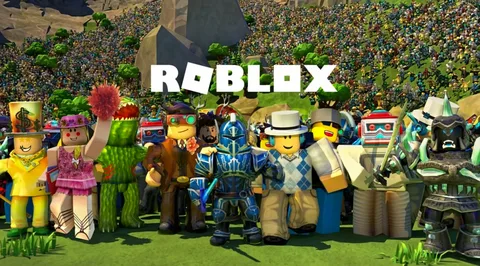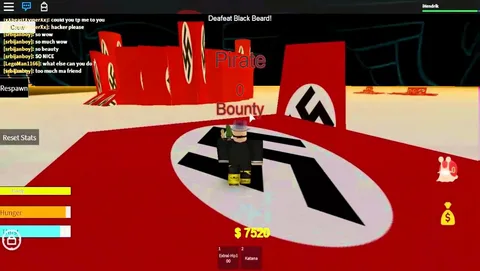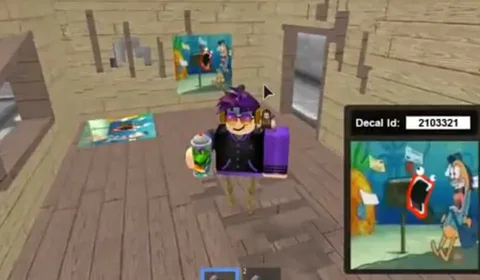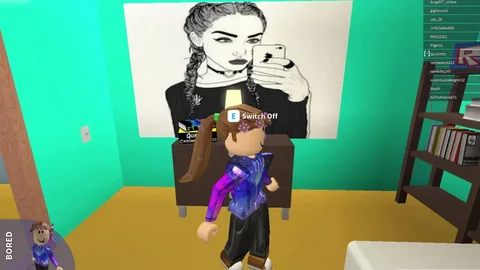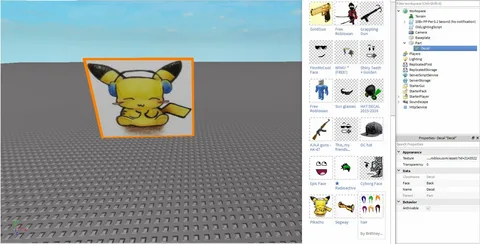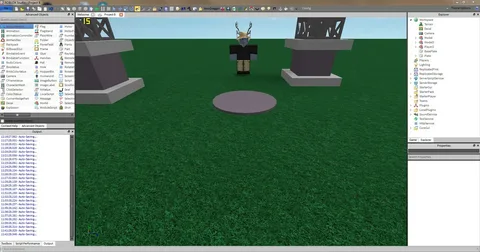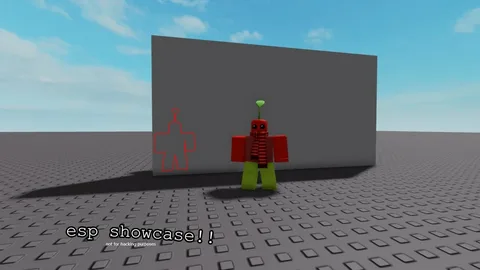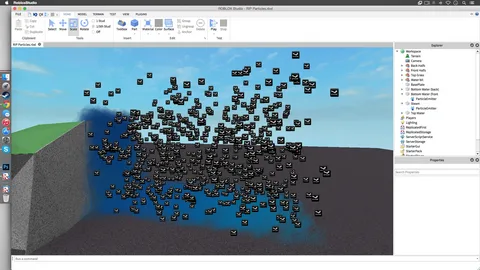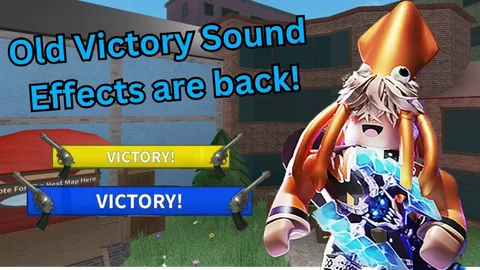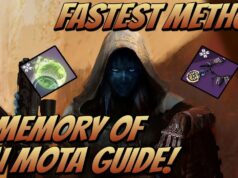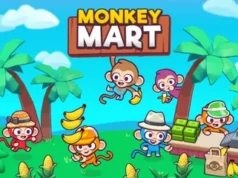User-generated material is available on the well-known online game platform Roblox in various formats. Roblox Decal IDs are one of the numerous tools that let users customize their experiences, and it’s a really effective tool. This post will explain Roblox Decal IDs in detail, go over their advantages, disadvantages, and pros and cons, answer some common queries, and provide a thorough rundown. Game makers may access the Roblox Decal Library, a massive library of user-uploaded graphics, symbols, and textures, to add customization to their projects. A set of identifiers known as Roblox Decal IDs are linked to every picture or decal that is published on the website. Users may quickly exchange and access particular decals with these unique IDs, customizing a variety of in-game surfaces, objects, and things.
What are the Roblox Decal IDs
Within Roblox, decal IDs are distinct number codes linked to certain photos or decals that users have posted to the platform. These codes serve as unique decal identifiers, making it simple for users to share, access, and use certain pictures inside the Roblox game environment.
In a Roblox game, decals—pictures or textures—can be placed on different surfaces, objects, or things, offering a great deal of customization. Decal IDs offer a simple method for integrating visual components into games, such as logos, emblems, textures, and unique designs.
Users usually have to right-click on an image and use an option like “Copy Image Address” to retrieve the URL to locate a Decal ID for a certain picture. They may then retrieve the code, which is a number, from the URL. This code is what makes that specific decal unique.
To sum up, Roblox Decal IDs are an essential feature that makes sharing and using personalised pictures easier, adding to the wide variety and inventive selection of user-generated material available on the Roblox platform.
Roblox Decal ID Codes
With such a large and constantly expanding collection of Roblox Decal IDs, there is bound to be something for everyone. Scrolling through the list will allow customers to locate everything they need, from happy chicks to frolicking vampires.
One easy and efficient approach to giving a game some more flair and excitement is to use Roblox photo IDs. Anyone can make their games look amazing and stand out with a few clicks. Without further ado, the Roblox picture IDs are as follows:
| Kitty | 123475161 |
| Red Dirt Bike | 30155526 |
| Miley Cyrus | 144685573 |
| Sapphire Encrusted Headphones | 53890741 |
| Monster Energy logo | 123474111 |
| No Noobs | 1081287 |
| Party Hat | 12345383 |
| Epic Face | 109251560 |
| Angry Patrick Star | 13712924 |
| Pink Party Dress with Diamond Belt | 90567189 |
| Anime Girl | 1234538 |
| Beluga | 7129155278 |
| Sword Pack (2) | 83250046 |
| AC/DC | 12347538 |
How Do Roblox Decal IDs Get Used
Users must take a few easy actions to use a Roblox decal ID.
They must first visit the Roblox website and log in.
After that, they must visit www.roblox.com/library/RobloxDecalID/ and replace RobloxDecalID with the decal ID shown in the inventory.
Lastly, they must press the “Get” button. They may then utilize the image in their game and have it added to their inventory.
How can I upload my own Roblox Decal
Users always have the option to submit their own decal in case they are unable to locate the desired picture in the list of Roblox decal IDs. They must adhere to a few easy measures to achieve this. Game makers may access the Roblox Decal Library, a massive library of user-uploaded graphics, symbols, and textures, to add customization to their projects.
They must visit the Roblox Creator Dashboard first.
They then have to select Decals from the Development Items menu.
After that, users must upload their images by clicking the Upload Asset button.
After completing this, the image will appear in their account, where they may edit or upload it straight to the marketplace.
Benefits of Decal IDs for Roblox
1. Customization
Decal IDs let players add distinctive pictures to their projects, allowing them to customize their game experience.
2. Branding
By using Decal IDs, developers may add logos, emblems, and other branding components to their games.
3. Storytelling
By adhering pictures to walls, floors, and other surfaces, players may utilize decals to visually convey stories.
4. Ambiance
Decals improve a game’s overall look by helping to create a particular ambience inside it.
Advertisement: Decal IDs are a tool that developers may utilize to promote or advertise in-game.
5. Artistic Expression
By allowing users to create their own photos, the platform promotes artistic freedom.
6. Realistic Textures and Details
Decals contribute to the creation of immersive settings.For educational purposes, decal IDs can be utilized for learning materials, visual aids, or instructional games.
7. Memorabilia
By making personalized decals, players may honor occasions or accomplishments.
8. Community interaction
Players may collaborate with one another by exchanging Decal IDs, which promotes community interaction.
9. Realism
By imitating real-world textures and images, decals enhance the realism of in-game environments.
10. Competition Prizes
To enhance the gaming experience, developers frequently provide personalized decals as rewards for in-game contests.
11. Virtual Goods
Using Decal IDs, players may produce virtual goods that they can sell inside the Roblox community.
12. Accessibility
By making it easier to share and access certain photos, Decal IDs help to promote accessibility.
13. Role-playing
Decal IDs help players customize their characters in role-playing games by enabling them to add special symbols or emblems.
14. Event Decorations
To build themed decorations for unique in-game events, developers can utilize Decal IDs.
15. Social Interaction
Players can express their ingenuity and interests by talking about custom decals.
16. Historical Replication
Decal IDs may be used to accurately recreate visual features in games set in historical times.
17. Cultural Representation
Decals make it easier for different cultures to be shown in the game environment.
18. Fan Engagement
By letting fans make and distribute original decals inspired by the game, developers may engage their audience.
Alternatives to Roblox Decal IDs
1. Painting using texture
Texture painting, which is frequently related to 3D modeling and game development, is the act of directly adding textures to surfaces in a digital environment. Texture painting is a tool that lets users—including game developers and designers—add intricate and personalized visual components to different items, characters, or locations on platforms like Roblox.
An outline of texture painting inside the Roblox environment is provided here:
1. Creation of Custom Textures
Using graphic design tools, users can create custom textures or select from pre-existing textures. These textures may consist of features, colors, and patterns that complement the project’s or game’s aesthetics.
2. Application to 3D Models
Users may “paint” or apply these textures directly onto the surfaces of 3D models within a 3D modeling software. Through this process, the items in the virtual realm gain more visual detail, realism, and individuality.
3. UV Mapping
3D models usually go through a procedure known as UV mapping prior to applying textures. The process of UV mapping entails flattening a 3D model into a 2D space and producing a map that specifies how textures are to be applied to certain model components.
4. Realism and Immersion
Creating a realistic and immersive virtual world requires the use of texture painting. It enables creators to imitate real-world materials like cloth, metal, or wood, enhancing the visual appeal and player engagement of the virtual environment.
5. Customization and Branding
One effective method for customization is texture painting. To give their games a unique personality, developers might embellish things with logos, branding features, or original artwork.
6. Dynamic Changes
Texture painting permits dynamic changes, in contrast to static graphics. Real-time texture updates and modifications allow developers to react to in-game events and provide dynamic visual effects.
7. In-Game Artistry
One type of art used in game creation is texture painting. With this approach, talented artists may make virtual worlds visually appealing and coherent landscapes, bringing their creative concepts to life.
8. Platforms for Game Development
Utilizing texture painting capabilities, creators may improve their games on platforms such as Roblox. For more complex texture generation, the procedure may entail integrating third-party software or employing built-in capabilities.
9. Collaborative Creation
Working together to paint a texture is possible. To provide a well-rounded and aesthetically pleasing game, several team members, such as artists and level designers, may contribute to the production and application of textures.
10. Educational Applications
Painting with textures has uses in education in addition to amusement. It lets users play with basic 3D graphics concepts, design ideas, and digital art. Game makers may access the Roblox Decal Library, a massive library of user-uploaded graphics, symbols, and textures, to add customization to their projects.
2. Importing Meshes
In 3D modeling and game development, mesh importing is the process of bringing external 3D models into a virtual world or game engine that were made with specialist tools. Mesh importation lets developers improve their games on platforms like Roblox by bringing pre-made 3D models into the virtual environment.
An overview of mesh importing with Roblox may be seen here:
1. External 3D Modeling Software
To produce elaborate and detailed 3D models, developers usually utilize Blender, Maya, or Cinema 4D before importing meshes into Roblox. Characters, items, buildings, and any other components that give the game more depth and realism can be included in these models.
2. File Formats
3D modeling software and gaming engines like Roblox frequently use.FBX and.OBJ files. 3D models are stored in these particular file formats.
3. Mesh Libraries
Programmers have the option of building their own 3D mesh libraries or using internet sources. A wide range of models, from basic geometric forms to intricate figures and architectural buildings, may be found in these collections.
4. Importing into Roblox Studio
Tools for importing external meshes are available in Roblox Studio, the programming environment for Roblox games. The “Model” and “MeshPart” components allow developers to import external 3D models.
5. Scaling and Orientation
To make sure the imported mesh blends in perfectly with the Roblox environment, developers may need to make certain changes to the mesh’s scale and orientation once it is imported. Maintaining correct alignment and proportions requires this step.
Texture Mapping: Associated textures are frequently included with imported polygons. By mapping these textures onto the mesh surfaces, developers may enhance the visual realism and intricacy of the 3D objects in the Roblox game.
6. Physics and Collision
To guarantee that the imported model interacts with other objects in the game properly, developers can specify the imported mesh’s physics and collision attributes. This involves defining the mesh’s reaction to player interactions, collisions, and forces.
7. Animation Integration
Developers may incorporate animations into their Roblox games if the imported model has any. This makes it possible for objects or characters to move and behave dynamically.
8. Complex buildings
When creators wish to include detailed designs or complex buildings that could be difficult to produce with the constraints of in-game building tools, mesh importing is very helpful.
9. Asset Marketplace
Developers have access to a vast array of pre-built meshes and models provided by other users on Roblox’s Asset Marketplace, in addition to the option to build their own meshes.
3. Graphical User Interfaces, or GUIs
1. User Interaction
GUIs give users a way to access menus, settings, inventories, and other elements that improve their entire gaming experience, allowing them to engage with the game in ways that go beyond the primary gameplay.
2. HUD (Head-Up Display)
The HUD, which puts crucial information right on the game screen, is often made using GUIs. Health bars, scores, money, and other real-time statistics could be included in this.
3. Roblox Studio creation
Using the integrated tools, developers may create GUI elements in Roblox Studio. The studio comes with a GUI editor that lets you design and arrange different graphical elements.
4. Positioning and Anchoring
GUI components can be positioned to stay in the appropriate location from the player’s perspective by anchoring them to particular regions of the screen. This is essential to keeping the layout unified and user-friendly.
5. Interactive Buttons
To conduct activities or move between game parts, players can click interactive buttons on graphical user interfaces (GUIs). These buttons can start scripts that control particular game features.
Developers can utilize graphical user interfaces (GUIs) to present text, labels, and other data on the screen. This might help give players feedback, telling story points, or giving directions.
6. Customization
Because GUIs are so adaptable, game creators may create aesthetically pleasing user interfaces that complement the overall look and feel of their games. Graphical elements, fonts, and colors are all customizable.
7. Responsive design and scaling
Graphical user interfaces (GUIs) may be made to adapt to various screen sizes and configurations. This guarantees a uniform and responsive user interface on all devices used by the player.
8. Tweening and Animation
Tweening methods may be used to create animation for GUI components. This makes the user interface more engaging by giving it a dynamic and eye-catching dimension.
9. Inventory Systems
The implementation of inventory systems is frequently done using GUIs. Players may control their in-game assets, equip things, and interact with their inventories through these interfaces.
10. Game Menus
The main menu, settings menu, and pause menu are just a few examples of the menus that are created in games using GUIs. Players may change settings, access different game modes, and start and stop the game via these menus.
11. Game Notifications
GUIs can show messages, alerts, or notifications within a game to notify players of updates or significant occurrences.
12. Mobile Compatibility
Roblox games’ graphical user interfaces are made to work on both PCs and mobile devices. When designing graphical user interfaces for mobile devices, developers must consider variations in screen sizes and input techniques.
14. Roblox Marketplace Integration
Some gaming interfaces (GUIs) come with components that link to the Roblox marketplace, enabling users to buy virtual products or acquire in-game stuff.
15. Accessibility
When designing a graphical user interface, accessibility elements should be considered to ensure that players of all skill levels interact and use the interface with ease.
4. Particle Formation
In game creation, particle systems are essential, even on platforms such as Roblox. They give the game world more life and realism by simulating and producing a range of visual effects. Particle systems are used in Roblox to generate effects like fire, smoke, sparks, rain, and magical spells. They are implemented using scripting. An outline of particle systems about creating Roblox games is provided below:
Definition: To generate a variety of visual effects, a particle system is a method for simulating and rendering a large number of tiny, independent graphical objects, or particles.
1. Particle Emitter
A particle system in Roblox usually consists of a particle emitter, which is a script or object that creates and regulates the actions of individual particles. The particle lifetime, emission rate, beginning velocity, and appearance are all controlled by the emitter.
2. Particle Properties
Particle size, color, transparency, rotation, and movement patterns are all customizable by developers. This adaptability makes it possible to create a vast array of visual effects.
3. Programming and programming
Roblox uses Lua scripting to construct particle systems. Developers use scripts to control particle emitters’ actions, enabling dynamic and interactive game effects.
4. Special Effects
Particle systems are frequently employed to produce effects like meteorological occurrences, magic spells, and explosions. For instance, a fire particle system may include particles that light up, rise, and then gradually disappear to replicate flickering flames.
5. Optimization
To ensure that the effects don’t adversely affect the game’s performance, developers must consider optimisation while creating particle systems. Depending on the capabilities of the player’s device, this might entail limiting the number of particles or changing the degree of detail. Advanced particle systems can detect collisions and interact with other game components. Raindrops, for example, may hit surfaces and produce splashes when they do.
6. Trail Effects
Characters or projectiles can have a feeling of motion and be more aesthetically pleasing by using particle systems to provide trail effects behind moving objects. Improvements to User InterfacesParticle systems may be applied to improve user interfaces in addition to real-world impacts. For instance, floating particles may be present in conjunction with a hover effect or button click. Game makers may access the Roblox Decal Library, a massive library of user-uploaded graphics, symbols, and textures, to add customization to their projects.
7. Realism and Immersion
By introducing dynamic features that react to the game environment and player actions, particle systems enhance a game’s realism and immersion.
8. Event Triggers
In-game events can activate particle systems, which offer a dynamic reaction to alterations in the gaming environment. This can involve setting off fireworks at a party or shooting sparks when a particular power is used. Particle systems provide developers with a great deal of flexibility and creative freedom. Playing around with various parameters enables the production of distinctive and eye-catching effects.
9. Performance Considerations
Although particle systems can improve visual aesthetics, game creators must strike a balance between the necessity to maintain good game performance and the demand for complex effects, particularly across a range of platforms.
10. Sound Design
Whether on platforms like Roblox or not, audio design is an essential component of game production that greatly enhances the entire gaming experience. Good audio design creates an atmosphere, improves immersion, and gives players crucial input. An outline of audio design with creating Roblox games is provided below:
5. Sound Effects
The audio components that support in-game events and activities are known as sound effects, or SFX. They include sounds such as footsteps, weapon sounds, background chatter, and other auditory clues that enhance the game’s realism and immersion.
1. Ambient Soundscapes
These are background noises that add to the overall mood of the gaming experience. This might be the sounds of faraway cities, rustling woods, or chirping birds. Soundscapes with careful design add to the gaming world’s overall immersion.
2. Music
A game’s music has a significant impact on its emotional tone. Developers can include background music that fits nicely with various game settings. For example, they may use tense music for combat scenes or serene music for exploration sections.
3. Dynamic Audio
This type of audio modifies itself in real-time in response to the player’s movements and the game’s surroundings. For instance, during combat, the music’s loudness or intensity can rise, and during a peaceful exploration phase, it might fall. Spatial audio gives the player a feeling of direction and distance by simulating the three-dimensional location of sound sources. This is necessary to provide spatial awareness and to make the gaming environment more realistic. Game makers may access the Roblox Decal Library, a massive library of user-uploaded graphics, symbols, and textures, to add customization to their projects.
4. Scripted Audio Events
Using scripting, game developers may set off particular audio events in reaction to certain in-game activities or occasions. A creaking sound, for example, might be produced when a door is opened.
5. Voiceovers and narration
These audio features might be utilized to tell a tale, offer players directions, or provide them with feedback. This gives the game a deeper level of narrative and character involvement.
- Players rely on auditory cues to comprehend the effects of their actions. In fighting, for instance, a successful hit could provide a pleasing sound, whereas a shot that misses might produce a different sound.
- Noises associated with menus, buttons, and other interface components are known as user interface (UI) noises. These noises enhance the user interface’s responsiveness and offer feedback.
6. Thematic Sound Design
Creating a recurring audio theme that fits the genre and environment of the game helps create a seamless and unforgettable gaming experience.
7. Interactive Music
Certain games’ interactive music systems can produce a smooth and lively musical experience by responding to the player’s movements.
8. Audio Mixing and Quality
Proper mixing and high-quality audio recordings are crucial. It is possible to avoid overpowering the player with noise by adjusting the levels of the various audio components.
9. Performance Considerations
Especially in online multiplayer games, developers must take into account how audio features can affect performance. Ensuring seamless gameplay and reducing latency may be achieved by optimizing audio files.
10. Accessibility
Players with hearing impairments should have access to subtitles or other alternatives for crucial audio information. Audio design should take accessibility into account.
11. Collaboration with Audio Specialists
To provide a seamless and polished audio experience, game developers frequently work in tandem with audio specialists, such as composers and sound designers.
FAQs
Q: How can I locate the image’s decal ID?
A: To get the URL, right-click on the picture and choose “Copy Image Address.” Take the URL and extract the Decal ID.
Q: Is there an image I can use as a decal?
A: Sure, but make sure the image complies with Roblox’s copyright and community rules.
Q: Are there any restrictions on the size of decal IDs?
A: Yes, decals have size restrictions. Larger photos might need to be resized.
Q: Can I sell products with personalized decals?
A: In the Roblox environment, developers can sell virtual products using customized decals.
Q: How can I report Decal IDs that are inappropriate?
A: Report any content that deviates from community standards using the Roblox platform’s reporting features.
Q: Is it possible to utilize Decal IDs in every Roblox game?
A: The parameters made by the game creator determine this. Some games may have restrictions or rules governing the use of custom decals.
Q: What occurs if the picture URL connected to a Decal ID stops working?
A: To avoid this problem, it is advised to utilize reliable image hosting services. The decal might not load properly.
Q: Is there an age limit on utilizing personalized decals?
A: Roblox’s terms of service must be followed, and age limits may apply to unsuitable content.
Q: Is it possible to wear Decal IDs on my avatar’s clothes?
A: You may add further personalization to avatar apparel by applying Decal IDs to it.
Q: Is it possible for me to utilize more than one decal ID in a game?
A: Although there isn’t a hard limit, using decals excessively might affect how well a game runs.
Q: Is it possible for me to work with others to make personalized decals?
A: Absolutely, users may work together to create decals and exchange Decal IDs for collaborative projects.
Q: How can I stop my custom decals from being used without permission?
A: To safeguard their unique decals, developers might use proprietary methods or access constraints.
Q: Is it possible to find guides for making and using Decal IDs?
Tutorials and instructions for utilizing Decal IDs are available in the Roblox developer documentation and community forums.
Q: I have a decal in my game; is it possible to modify its decal ID?
A: No, a Decal ID cannot be altered once it has been assigned. To use a different ID, users will need to create a new decal.
Q: How can I use Decal IDs to market my game?
A: Within the Roblox platform, developers can design promotional decals that may be utilized in advertising campaigns.
Conclusion
To sum up, Roblox Decal IDs are an effective and adaptable way to customize your gaming experience on the site. Decal IDs enable community participation and stimulate innovation, among many other advantages. Users must be aware of possible hazards, such as improper material and copyright issues. Although Decal IDs offer a quick and easy way to customize, players may also experiment with other ways to create a variety of visual effects in their games. Roblox has a variety of tools to meet various creative demands, ranging from sophisticated coding to texture painting. In the end, using Decal IDs enhances and personalizes the Roblox experience and contributes to the vibrant and varied community on the site. Game makers may access the Roblox Decal Library, a massive library of user-uploaded graphics, symbols, and textures, to add customization to their projects. Developers and users alike will keep coming up with creative ways to use this functionality for both functional and artistic ends as the platform develops. Roblox Decal IDs continue to be a crucial component in forming the virtual worlds within the Roblox metaverse, whether they are used to create immersive surroundings, narrate captivating stories, or promote virtual commerce.


